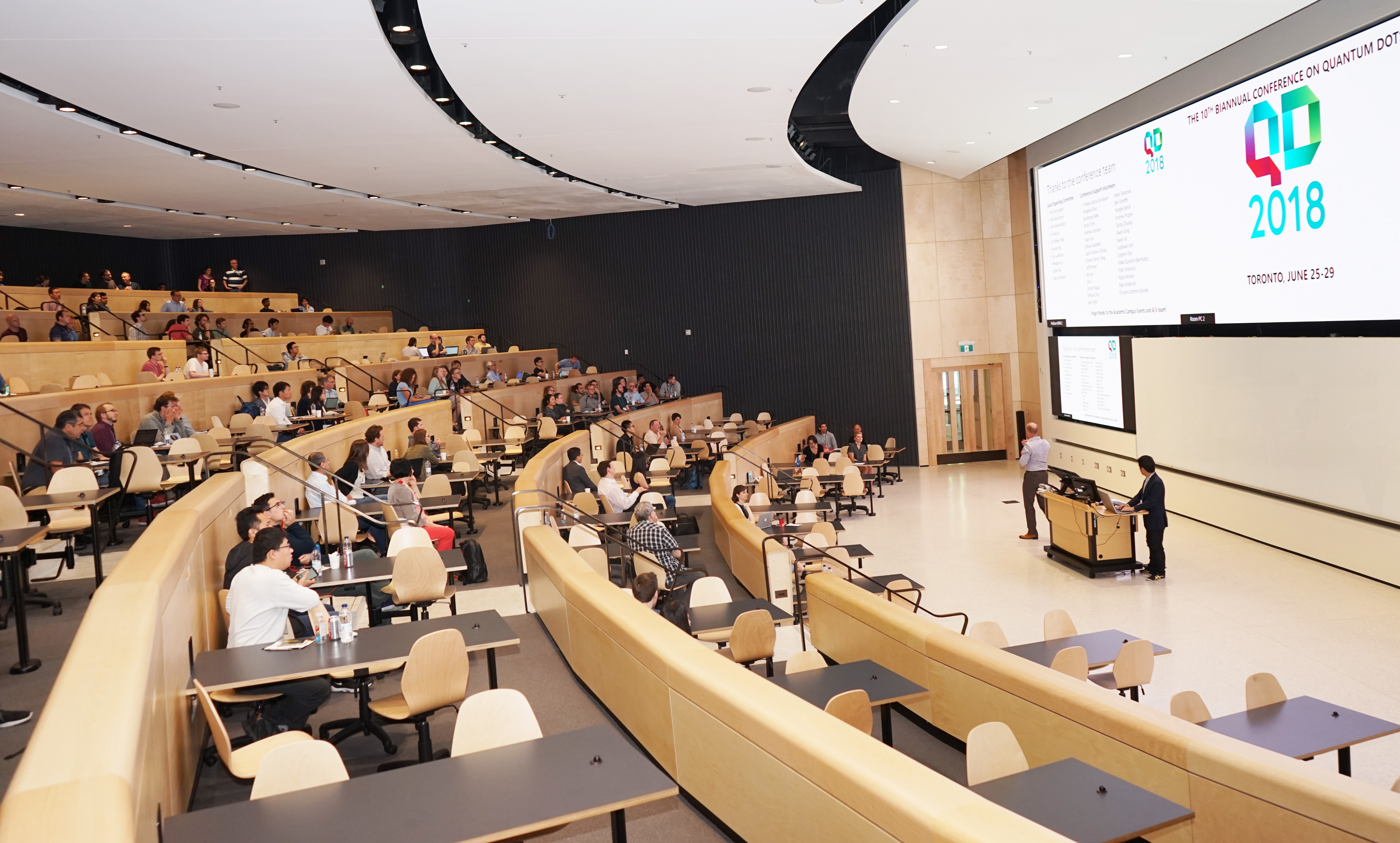
July 9, 2018
Quantum dots are tiny particles with big potential.
Just a few nanometres in size, these structures are so tiny that they produce what researchers call quantum confinement effects and their properties differ from those of larger particles made of the same material. For example, these dots can absorb infrared light that is not absorbed by conventional solar panels or can be tuned to emit precise colours on television screens.
With applications in a broad range of areas — from enabling ultra-fast quantum computers to super-secure long distance communication — these nanomaterials could hold the key to solving a myriad of societal and commercial challenges.
More than 340 quantum dot researchers from 26 countries gathered at the Myhal Centre for Engineering Innovation & Entrepreneurship for the 10th Biannual Conference on Quantum Dots from June 25 -29.
The conference was chaired by Professor Ted Sargent of The Edward S. Rogers Sr. Department of Electrical & Computer Engineering (ECE) and included plenary talks by leaders in the field of quantum dots like Professor Dimitri Talapin of the University of Chicago, Professor Xiaoyang Zhu of Columbia University, Professor Manfred Bayer of Dortmund University, Professor Yasuhiko Arakawa of the University of Tokyo and Dr. Victor Klimov of Los Alamos National Laboratory.
“We have a very strong research program in quantum dots here at the University of Toronto — across U of T Engineering as well as in Chemistry, Physics and Pharmacy,” said Professor Sargent (ECE). “So, it was exciting to welcome the world’s leading quantum dot researchers at one of the largest conferences of its kind.”
The five-day conference took place at U of T Engineering’s new Myhal Centre and included more than 80 talks, two poster presentation sessions and concluded with award presentations and the announcement of the location of the 2020 Quantum Dot conference.
“From fundamentals, to materials, to applications, we heard talks and presentations from leaders in all areas of quantum dot research,” said Professor Sargent. “It was a fantastic opportunity to learn from and share ideas with others and it was especially productive to host it in the Myhal Centre, a space designed with collaboration in mind.”
More information:
Jessica MacInnis
Senior Communications Officer
The Edward S. Rogers Sr. Department of Electrical & Computer Engineering
416-978-7997; jessica.macinnis@utoronto.ca